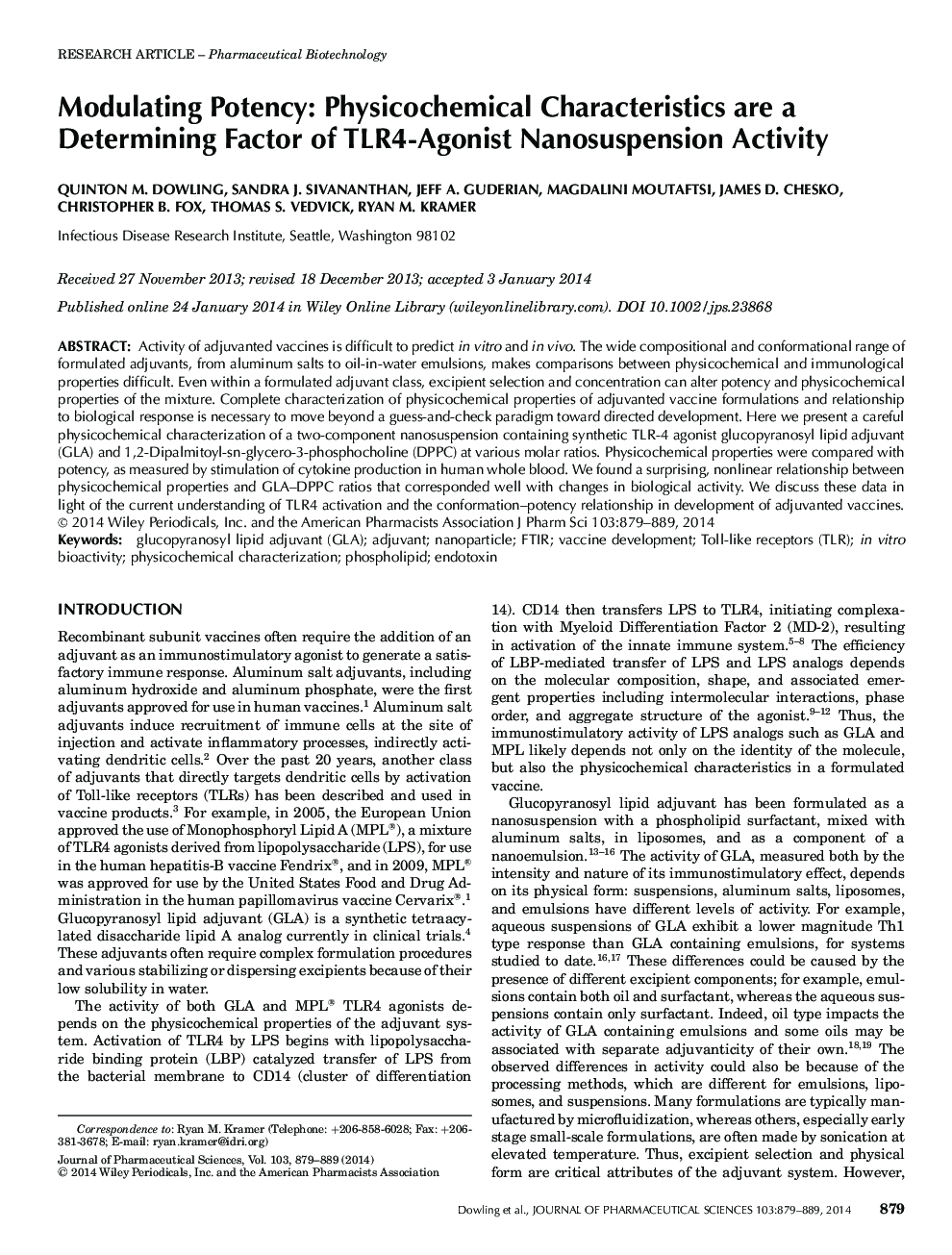| Article ID | Journal | Published Year | Pages | File Type |
|---|---|---|---|---|
| 10162563 | Journal of Pharmaceutical Sciences | 2014 | 11 Pages |
Abstract
Activity of adjuvanted vaccines is difficult to predict in vitro and in vivo. The wide compositional and conformational range of formulated adjuvants, from aluminum salts to oil-in-water emulsions, makes comparisons between physicochemical and immunological properties difficult. Even within a formulated adjuvant class, excipient selection and concentration can alter potency and physicochemical properties of the mixture. Complete characterization of physicochemical properties of adjuvanted vaccine formulations and relationship to biological response is necessary to move beyond a guess-and-check paradigm toward directed development. Here we present a careful physicochemical characterization of a two-component nanosuspension containing synthetic TLR-4 agonist glucopyranosyl lipid adjuvant (GLA) and 1,2-Dipalmitoyl-sn-glycero-3-phosphocholine (DPPC) at various molar ratios. Physicochemical properties were compared with potency, as measured by stimulation of cytokine production in human whole blood. We found a surprising, nonlinear relationship between physicochemical properties and GLA-DPPC ratios that corresponded well with changes in biological activity. We discuss these data in light of the current understanding of TLR4 activation and the conformation-potency relationship in development of adjuvanted vaccines.
Keywords
Related Topics
Health Sciences
Pharmacology, Toxicology and Pharmaceutical Science
Drug Discovery
Authors
Quinton M. Dowling, Sandra J. Sivananthan, Jeff A. Guderian, Magdalini Moutaftsi, James D. Chesko, Christopher B. Fox, Thomas S. Vedvick, Ryan M. Kramer,
